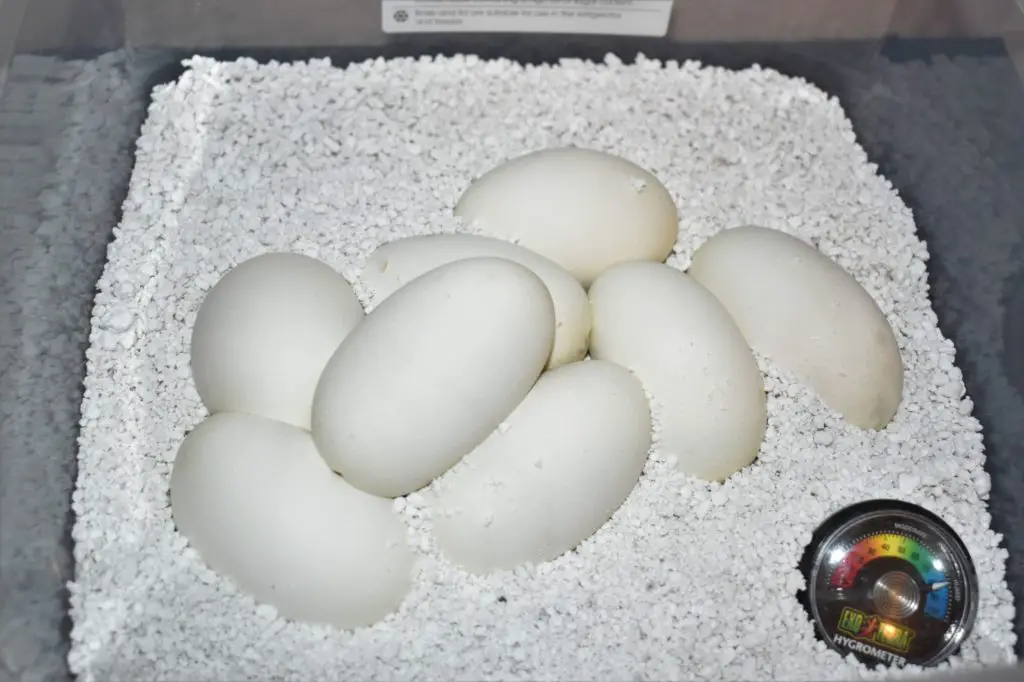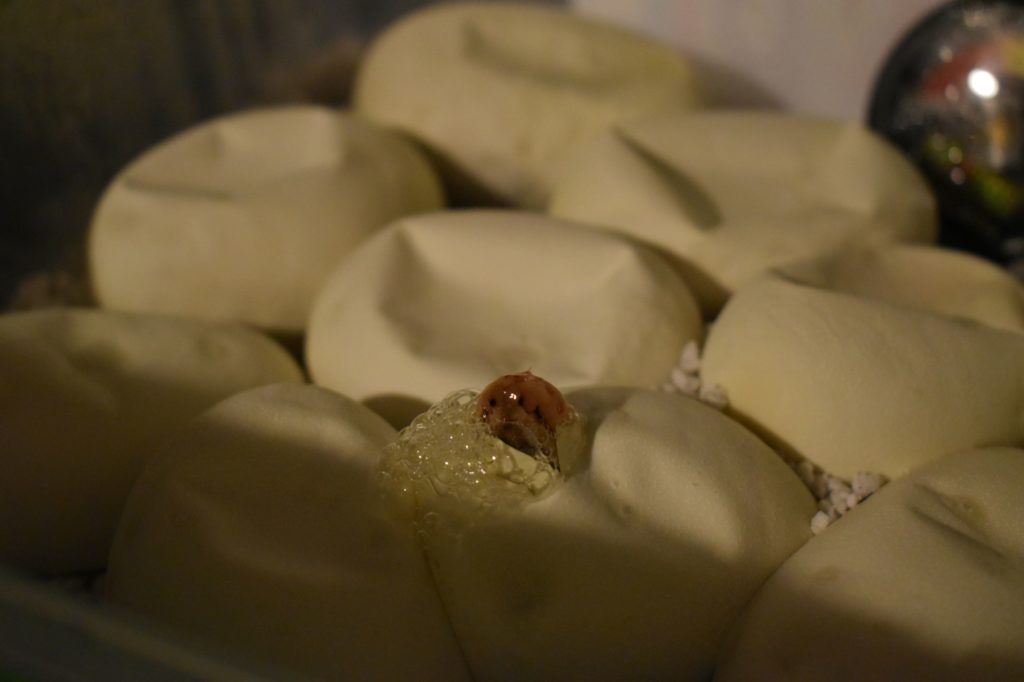Ball Python eggs are reasonably hardy as far as Pythonidae eggs go. In fact, a lot of hobbyists find they tolerate minor fluctuations in temperature and humidity so long as they’re temporary. Nonetheless, there are some guidelines to follow when collecting and incubating them if you want to get the best hatch rate possible.
On this page, I’ll tell you what the best incubation parameters are, before giving some articles that go into a lot more detail about egg-laying and incubation.
How many eggs and how to collect them
There was an old study years ago that decided that the average number of Ball Python eggs per clutch was 6. Since then, I’ve averaged the clutch sizes of fellow breeders and those collected by a few scientific studies and come up with my own estimate: 7.
Who’s right? Who cares! What you need to remember from this information is that the vast majority of clutches contain between 5 and 8 eggs. So when preparing for hatchlings, 8 is the minimum number of little snakes you should be getting ready for.
To collect the eggs, you need to do it in four steps:
- Prepare an egg box and let it warm up for a few days before your snake actually lays.
- When she’s laid, gently unwrap the female from her eggs. If you’re worried about getting bit, wear gloves.
- Carefully lift the eggs and put them into the egg box without changing their orientation or making any rapid movements. Make sure the egg box is securely closed (airtight, preferably) and put it in the incubator.
- Give the female a rinse in lukewarm water to get the scent of eggs off of her: this will get her back on food more quickly. It’s also a good idea to clean the enclosure at this point.

Incubation temperature and humidity
Perhaps the two main points to consider during incubation are temperature and humidity. If you get either of these parameters wrong, your eggs will die.
Temperature needs to be 88-92°f (31-33°c). Any higher or lower, and the hatch rate may be negatively affected. To really keep things on track, temperature stability is also very important.
Even some of the best professional incubators fluctuate by 0.5-2 degrees over the course of a day. This is still what I would classify as very good stability. All you need to remember is that fluctuations or more than a couple of degrees withing a 24hr period are best avoided.
For humidity, the same thing goes: it should be constant throughout the whole incubation period. Dessiccation is a major cause of reptile egg mortality in the wild, and it seems that the higher the humidity, the better. For successful incubation, it should be above 90% and preferably above 95%.

Common incubation problems
- Eggs drying out. Are your eggs dimpling within the first couple of weeks? This probably means they are drying out. To deal with this, add a table spoon or two of water to the substrate. When you’ve done that, add a layer of Glad Press’n Seal under the lid and press it down to create an airtight seal that will hold in moisture.
- Moldy eggs. Sometimes a couple of eggs go moldy, and you immediately start to wonder if they are still alive, and whether they’ll somehow infect the others. My advice is to leave them alone. Mold does not attack healthy eggs, and sometimes even moldy ones hatch.
Obviously I haven’t covered the whole incubation topic here, because there’s a lot more to it than can be covered in one post. For a lot more detail, I recommend checking out the articles below…
More on this subject:
- Ball Python Egg Incubation
- DIY Ball Python Incubator
- How many eggs do Ball Pythons lay?
- Do female Ball Pythons lay eggs without a male?
